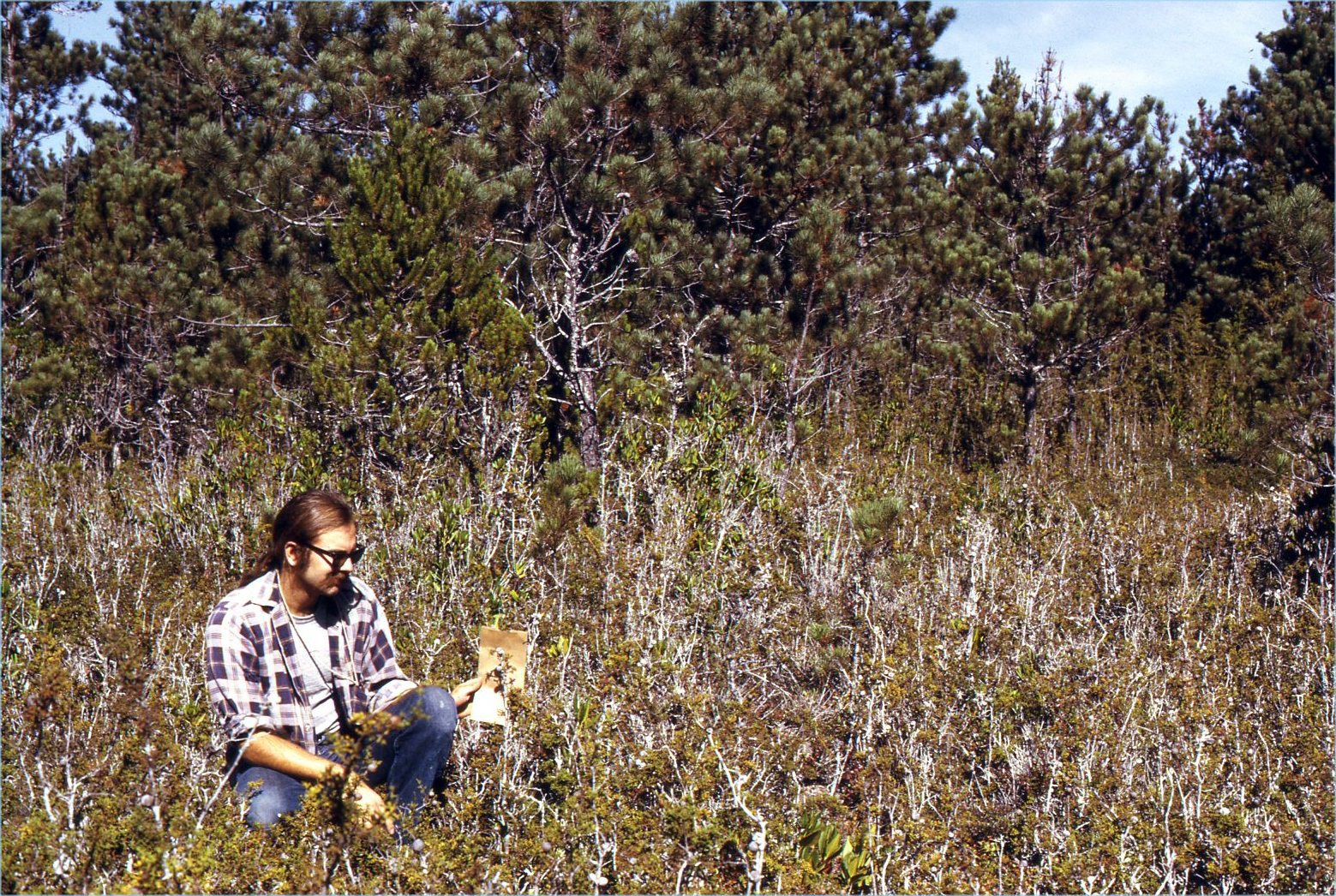
Macrolichens of the Pygmy Forest
Mendocino Co. California
James A. Malachowski
More
information on Macrolichens of the Pygmy Forests
Lichens are symbiotic relationship between
fungi & algae
that are often overlooked by the casual naturalist and botanist alike. Although
usually disregarded, lichens are abundant throughout California and especially so
in the pygmy forests along the Mendocino coast. When noticed, these plants are
conspicuous on trees, shrubs, rock and soil. This is particularly true after a
rain, which brings out the bright colors of many lichens which are often dull
and brownish when dry.
The pygmy forests of Mendocino County, California surveyed comprise a unique ecosystem and are sharply differentiated from the neighboring forests. Californian pygmy forests occur on three extended terraces, cut by the rising sea during the Pleistocene epoch, which ran parallel to the coast at elevations of 300, 425, and 650 feet (Jenny, 1969). The pygmy forests are dominated by stunted Cypress, Cypressus pygmaea (Lemmon) Sarg.: Bolander pine, Pinus contorta ssp. bolanderl (Parl.) Vasey; and dwarfed Bishop pine, Pinus muricata D. Don. Also present are ericaceous dwarfed shrubs, Labrador-gea, Ledium glandulosum ssp. columbianum (Piper) C. L. Hitchc.; California rosebay, Rhododendron macrophyllum D. Don; Salal, Gaultheria shallon Pursh.; two species of Manzanita, Arctostaphylos nummularia Gray and A. Columbiana Piper; and Huckelberry, Vaccinium ovatum Pursh.
In general this area is species poor and space-unsaturated with regard to vascular plants. Up to 25 percent of the soil surface is bare or covered by lichens (Jenny, 1969). Most of these lichens belong to the genus Cladonia, with Cladonia crispata (Ach.) Flot. making up 90 percent of the lichen ground cover.
The pygmy forests are surrounded by woods or tall Bishop pine and Shore pine, Pinus contorta Dougl. Ex Loud.; and by forests dominated by giant Redwoods, Sequoia sempervirens (D. Don) Endel, and Douglas fir, Pseudotsuga menziesii (Mirb.) Franco.
The stunting of vascular vegetation, which gives this area its definitive name, can be attributed largely to two environmental factors, the Blacklock podsol and moisture availability.
The Blacklock podsol system is composed of a four inch thick surface layer, a fourteen inch thick bleached, white A2 horizon, and a cemented hardpan B-horizon which varies from 18-30 inches in thickness. The surface of the soil is extremely acid, having a pH of 2.8-3.9. It is also low in available nitrogen, phosphorous, potassium, and micronutrients. This supply of important exchange ions, calcium, magnesium, and potassium, is also very low, being less than 1 mg/100g (Jenny, 1969).
After 5-8 inches of rain in the winter the entire surface soil becomes flooded due to the underlying hardpan which produces an artificial water table higher than the normal one in surrounding areas. By late spring this surface water disappears and the soil dried down to the hardpan, hardens and exerts xeric conditions on the vascular plants. A few depressions remain moist throughout the year and give rise to Sphagnum bogs.
Van Damme State Park offers a Pygmy Forest Self Guided Trail off of Airport Rd and Fern Canyon Trail..
Click for: More information on Macrolichens of the Pygmy Forests HTML
Click Here for: Macrolichens of the Pygmy Forest PDF